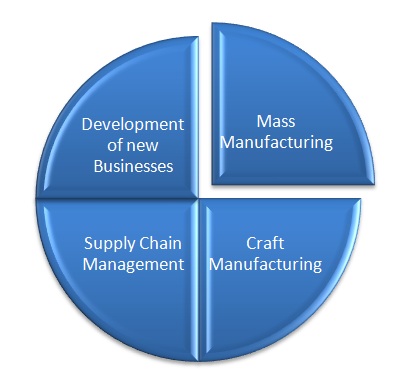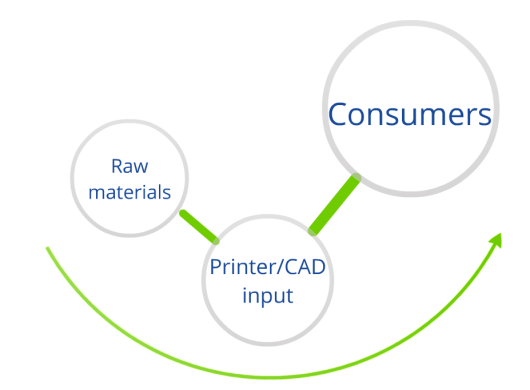Economic Impacts of 3D Printing
Bowyer (2010) analysed the stable relationships between humans and nature and wanted to imitate this into his self replicating machine, project Reprap. Therefore initiating an open source project that ‘enables a more equal society’ through granting others that don’t have the money to buy a machine to have one replicated by others and also preventing a “potentially very powerful technology” (Bowyer cited in Flahety, 2007) from getting in the wrong hands and dominating the market place. However he does acknowledge that the drawback to this is that there is no economic gain to be made from Reprap because of the self replication aspect and they are available open source.
Supply Chain Structure:
The removal of part of the supply chain and human economic activity in producing goods could potentially lead to the destruction of manufacturing industry. This affects not just the direct participants in this industry but also the service sectors that support it.
- Table adapted from Office for National Statistics – Census 2001 (Key Statistics Urban Areas – Part 2 – KS11a)
Questions have to be asked about the potential mass unemployment that could be driven by the movement into 3D printing if the people in these industries are directly affected (38.8% of employed people). The detraction of labour in industries is not a new argument to be had. In the recent past it as argued that computers were going to drive people out of jobs. Berg & Dalton (1975) argue that the movement towards service sector jobs will create more employment at higher wages and therefore despite the manufacturing sector being diluted, in the case of 3D printing, the sector shift to services will compensate for similarly skilled labour as in the future many see consumers downloading products as they do music today. Generation of wealth brings employment in other areas according to Bowyer (2010).
The Development of new businesses:
Corney (2005) argues that “If Gershenfeld (2005) and Bowyer (2010) are correct rapid prototyping technology will eventually undermine the need for centralised mass production (and the manufacturing technologies that support it). In this way the production of manufacturing tooling could go the same way as magnetic tapes and paper drawings.” as online companies can start-up quickly and easily because they are not inhibited by complicated and costly manufacturing processes.Therefore it is essential that this technology is welcomed and developed in a positive light in order to drive economic change and keep the UK economy at the forefront of innovation, through mobility of up to 38.8% of labour. This allows businesses to thrive in the future having been built on a platform that embraces change. Societal impact of this has to be reduced as much as possible and gradual in order to gain public support, however there is trade-off between the speed of diffusion of the innovation and the mobility of labour away from the declining industries if the 3D printing diffuses.
Economic Benefits




hi,
I’d like to have the reference of Corney (2005) if possible –
thx
Asking quuestions are in fact fastidios thing if you are not understanding anything completely, but this article provides fastidious understnding even.
Fantastic site. Lots of useful info here. I’m sending it to some buddies ans additionally sharing in delicious.
And naturally, thanks for your effort!
This is the double edged sword of 3d printing, if we are to embrace this technology and mover forward as a species we must also allow ourselves to question the validity of our current economic system.